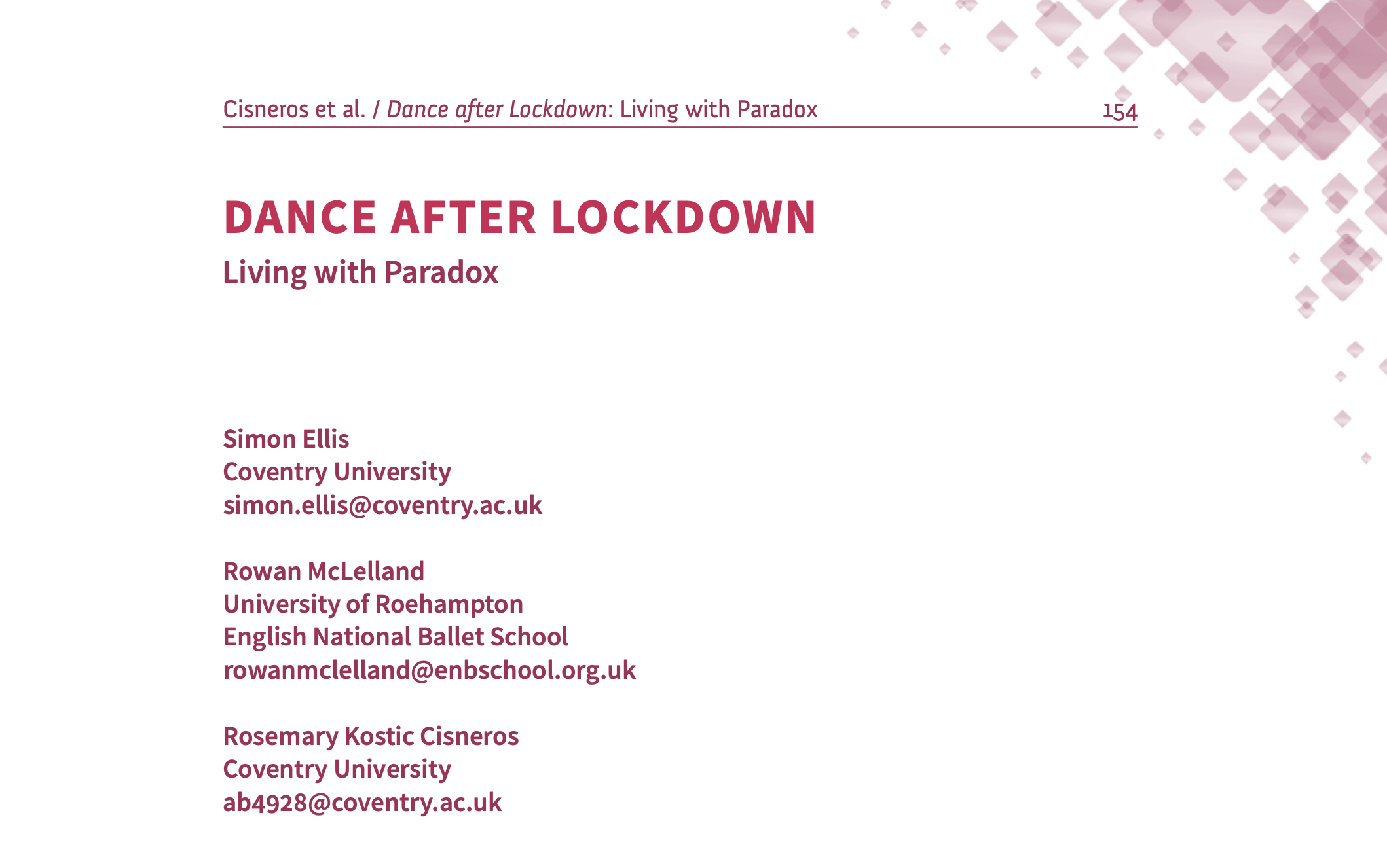This writing explores the experiences of people in the UK’s contemporary dance sector during the COVID-19 pandemic.1 It draws on qualitative data from a small research project—Dance after Lockdown—to examine how that sector understands their work, and how the language and ideology of the creative industries have shaped the lives and experiences of contemporary dance artists and institutions in the UK. The paper offers a range of diverse voices as one of the goals of the research was to examine the breadth of experiences, which we hope makes a case for the need to have a dance sector that is flexible and responsive to the needs of many freelance dance artists.
It was written in collaboration with my colleagues Rosa Cisneros and Rowan McLelland and is an output from the Dance After Lockdown project.
Ellis, S., McLelland, R., and Kostic Cisneros, R. (2023) ‘Dance after Lockdown: Living with Paradox’. Kritika Kultura 40, 154–175. https://ajol.ateneo.edu/kk/articles/570/7392
Supported by C-DaRE — the Centre for Dance Research — at Coventry University.

 mini essay
ripeness
I’m in the middle of supporting the development of Igor and Moreno’s new choreography Karrasekare. The work is at an intriguing stage some seven
mini essay
ripeness
I’m in the middle of supporting the development of Igor and Moreno’s new choreography Karrasekare. The work is at an intriguing stage some seven